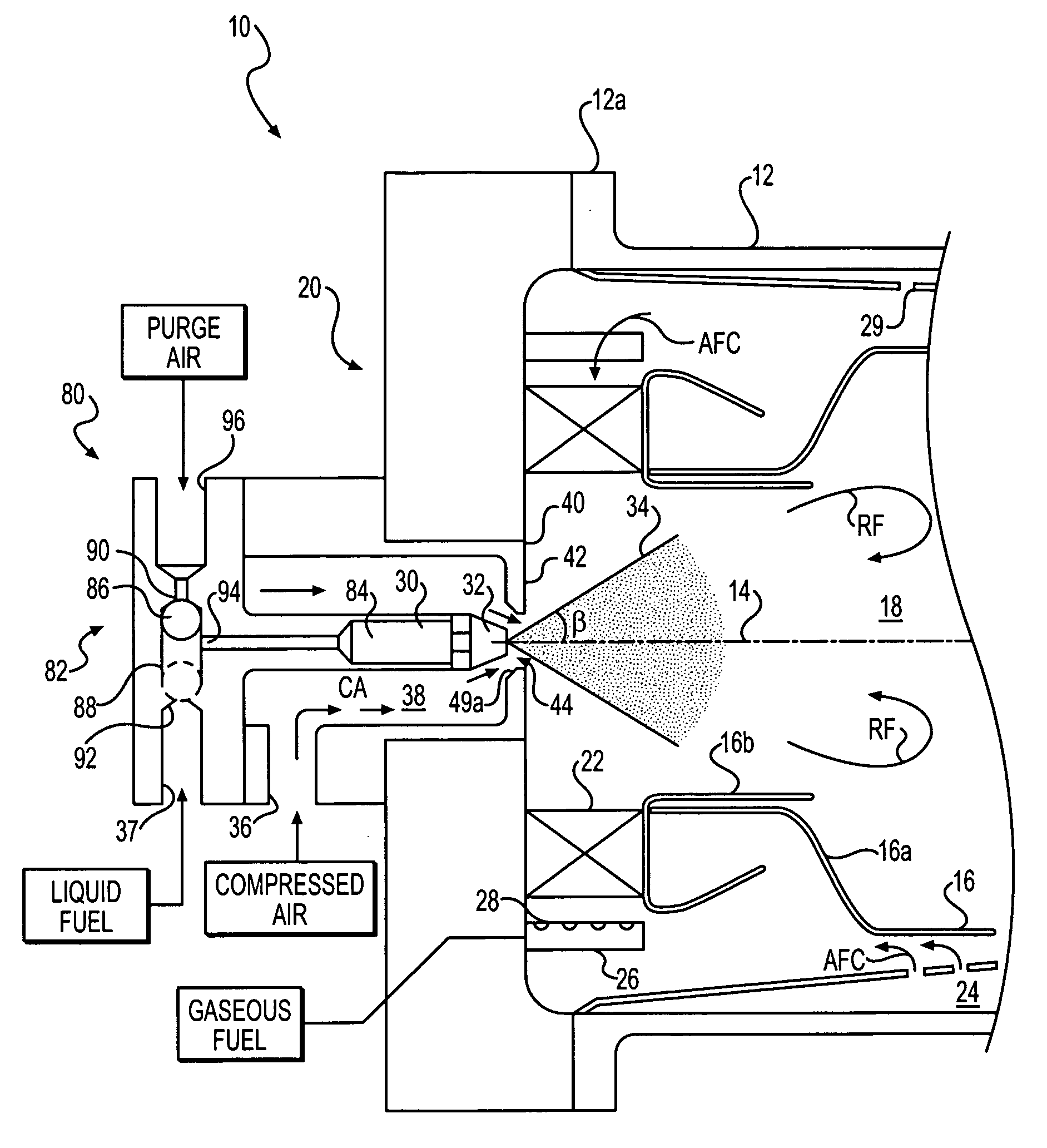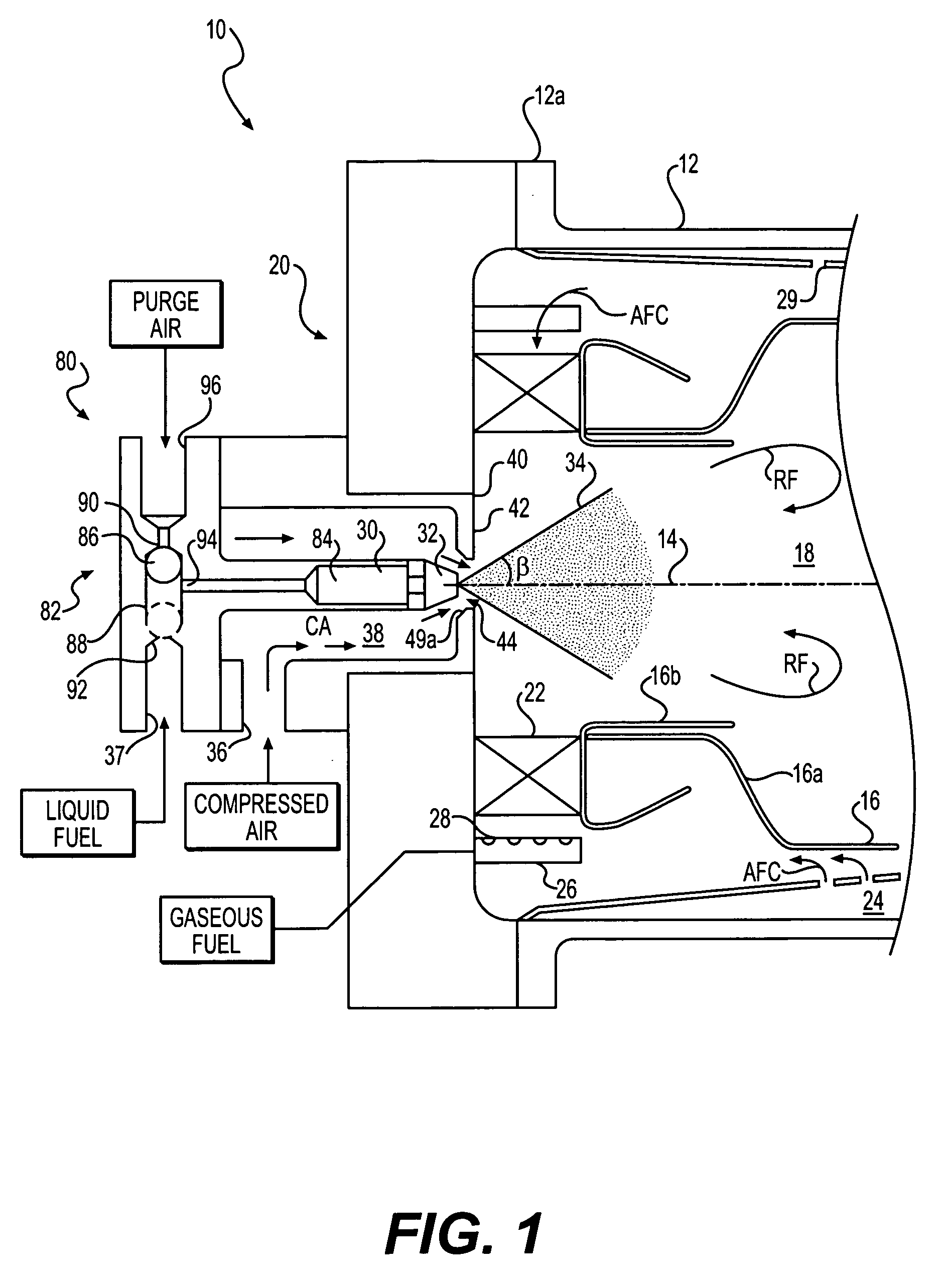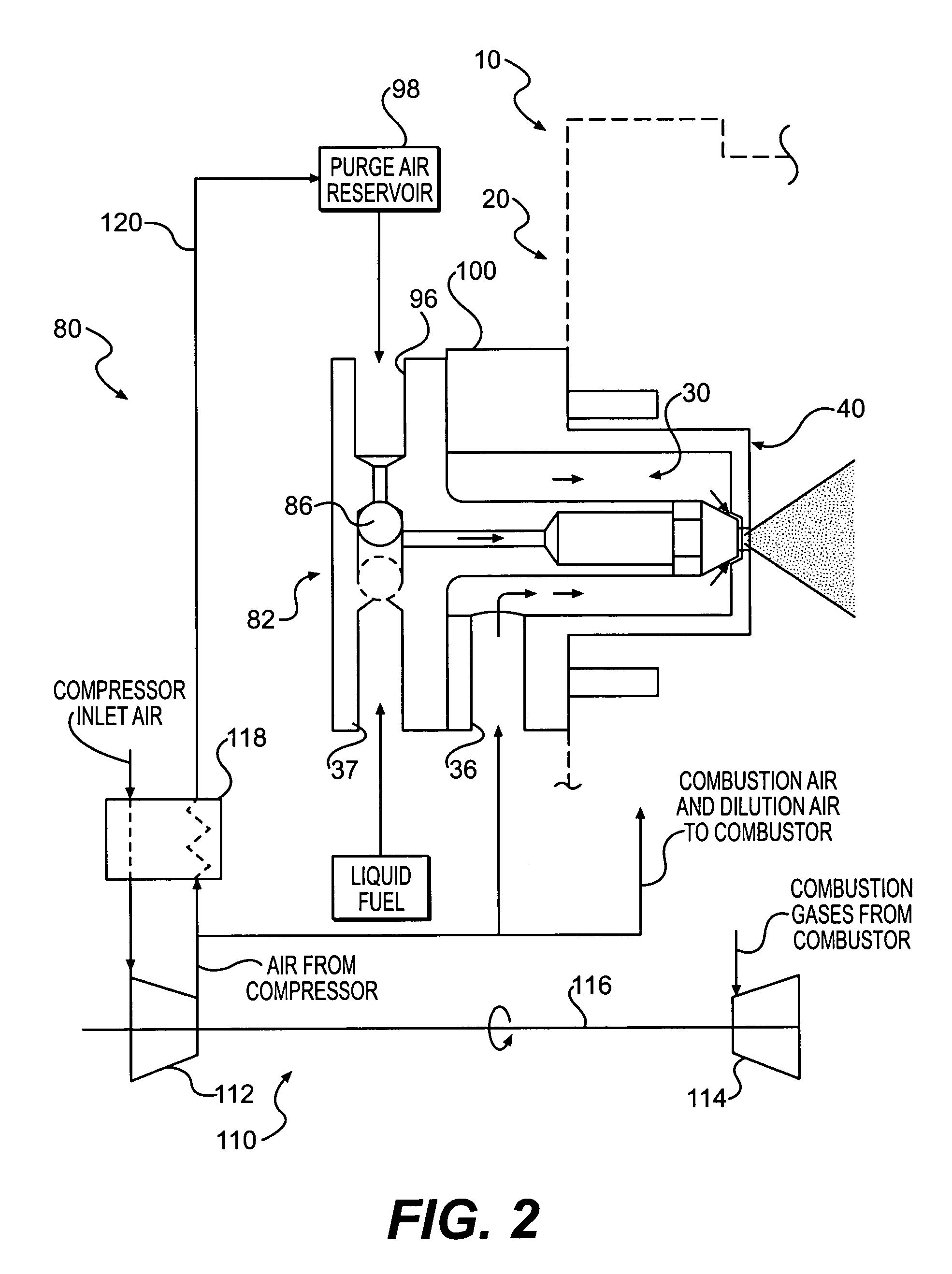Dual fuel can combustor with automatic liquid fuel purge
- Summary
- Abstract
- Description
- Claims
- Application Information
AI Technical Summary
Problems solved by technology
Method used
Image
Examples
Embodiment Construction
[0012]In accordance with the present invention, as broadly described herein, a dual fuel can combustor with automatic liquid fuel purge system includes a combustor housing having a longitudinal axis. As embodied herein, and with reference to FIG. 1, can combustor 10 includes housing 12, which is generally cylindrical with respect to longitudinal axis 14 although other general shapes can be used, as one of ordinary skill in the art would understand. Housing 12 includes a head end 12a.
[0013]Also in accordance with the present invention, as broadly described herein, the gas fired can combustor further includes combustor liner 16 disposed within, and radially spaced from, housing 12. Liner 16 is also substantially cylindrical about axis 14, but may include tapered, stepped, or “necked” portions of different diameters, such as liner end 16a including pre-chamber 16b, both shown longitudinally adjacent housing end 12a, in the FIG. 1 embodiment. Liner 16 can be fabricated with known high ...
PUM
 Login to View More
Login to View More Abstract
Description
Claims
Application Information
 Login to View More
Login to View More - R&D
- Intellectual Property
- Life Sciences
- Materials
- Tech Scout
- Unparalleled Data Quality
- Higher Quality Content
- 60% Fewer Hallucinations
Browse by: Latest US Patents, China's latest patents, Technical Efficacy Thesaurus, Application Domain, Technology Topic, Popular Technical Reports.
© 2025 PatSnap. All rights reserved.Legal|Privacy policy|Modern Slavery Act Transparency Statement|Sitemap|About US| Contact US: help@patsnap.com



